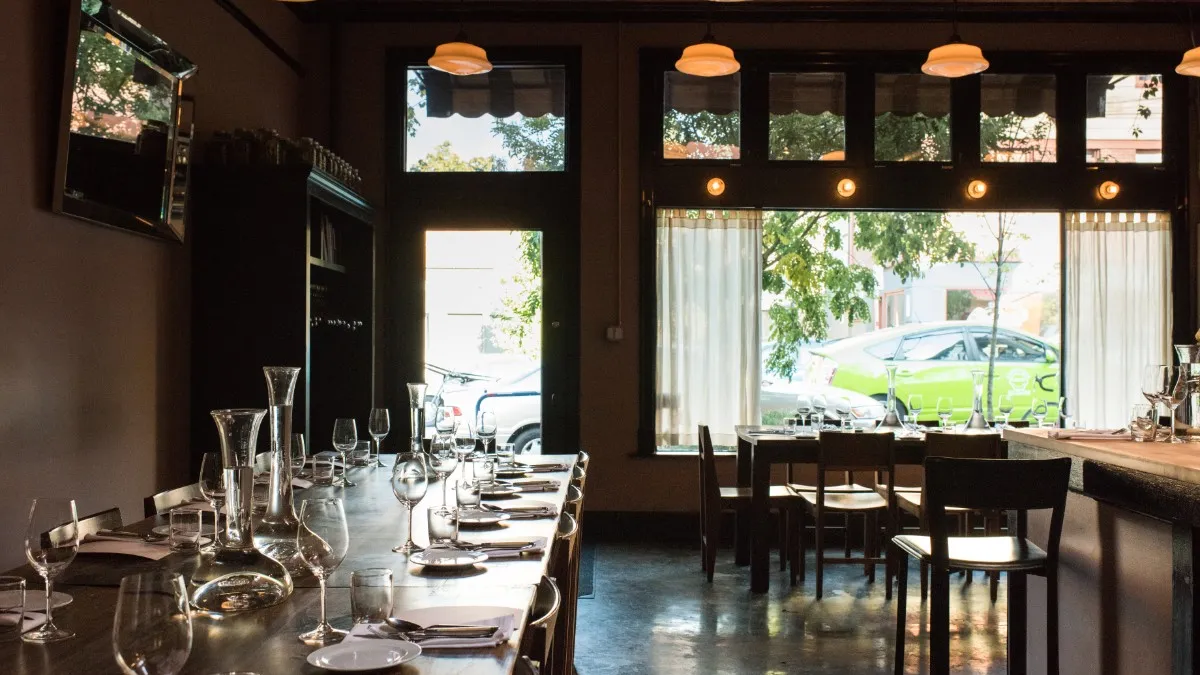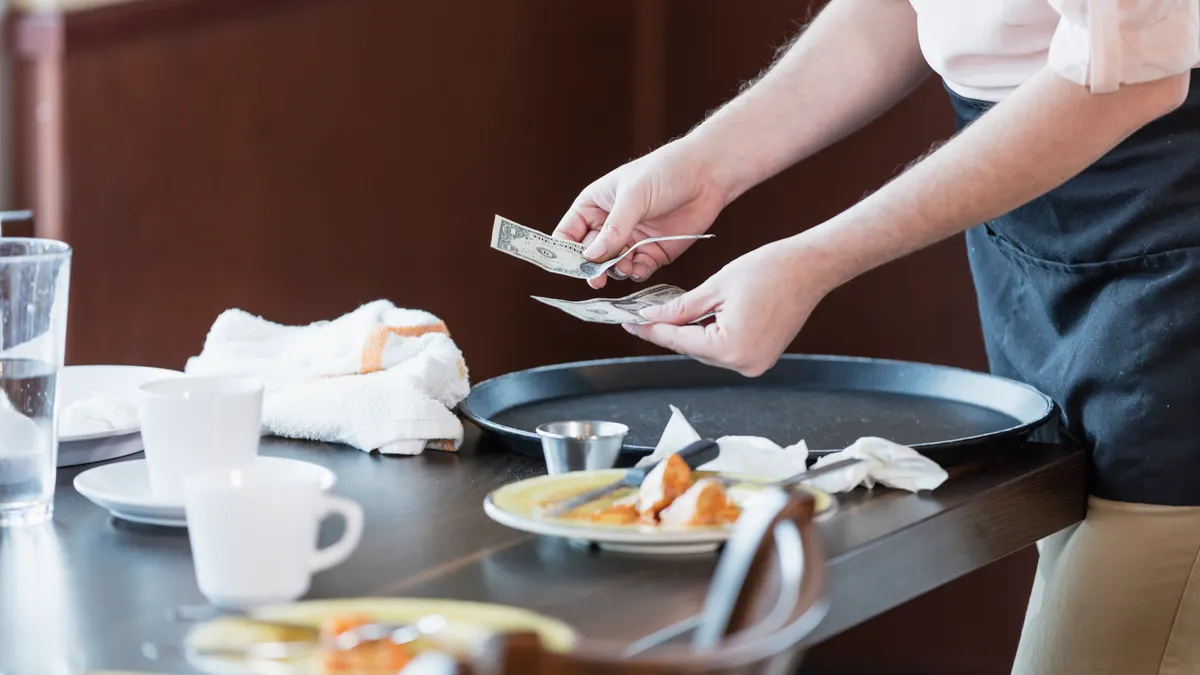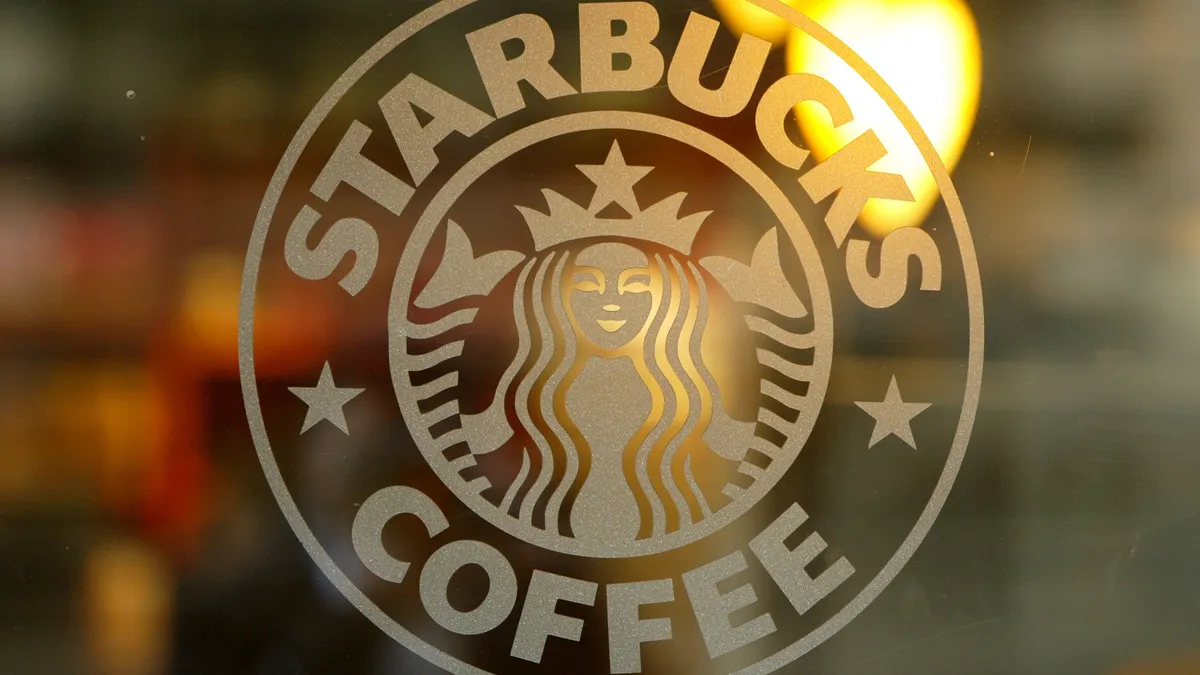Dinners at Portland, Oregon-based fine dining restaurant Beast are an event. A typical six-course dinner takes two and a half hours, and diners indulge on food like Wagyu beef tartare, squid ink chitarra pasta, black garlic-glazed pork belly and a sprouting broccoli salad. But the novel coronavirus has forced the James Beard Award-winning restaurant to grind to a halt.
For the first time since it opened over 12 years ago, chef and owner Naomi Pomeroy made the difficult decision to temporarily close her restaurant and nearby cocktail bar Expatriate in March, laying off 30 employees and herself.
Pomeroy and her staff join millions of workers that have since become unemployed following state-mandated closures and stay-at-home orders. Other prominent chefs have been forced to shutter their doors as well: Union Square Hospitality Group laid off 80% of its staff; Tom Colicchio closed all of his Los Angeles and New York City restaurants; David Chang’s Momofuku shut its doors in New York City, Los Angeles and Washington, D.C. until further notice.
“Running a restaurant always feels a little stressful,” Pomeroy said. “If it wasn’t a national crisis, it could be like an individual one. … I would say it doesn’t feel that dissimilar from just normal day-to-day operations, except the big difference here is that … the virus doesn’t discriminate,” Pomeroy said. “It’s closed the French Laundry. It’s closed Cafe Boulud. Your mom and pop is closed.”
Every owner that has spent years building up their restaurants with loyal staff and customers now face an uncertain future, one where they don’t know when they will be able to open and if they will be able to get their employees back.
"I think one of the things that comes to light through all of this is we, as restaurateurs, owe it to the larger community and ourselves to sort of explain the trials and tribulations of running an independent restaurant."

Naomi Pomeroy
Chef and owner, Beast
Pomeroy considered switching to takeout and delivery, an avenue many operators have taken, but realized everything would have to be a la carte and the volume of meals needed to keep operations going wasn’t feasible, she told Restaurant Dive. Most importantly, there was no easy way to ensure the safety of her employees during the outbreak, she said.
“A lot of people have responded, like ‘hey why don’t you just reach into your coffers and … pay employees while you’re closed?’” Pomeroy said. “I think one of the things that comes to light through all of this is we, as restaurateurs, owe it to the larger community and ourselves to sort of explain the trials and tribulations of running an independent restaurant.”
She said 90% of the money that comes into Beast goes to employees, vendors and the overall cost of staying in business, adding that she and her husband don’t take a paycheck from the Expatriate cocktail bar to make sure it goes to her employees, she said.
“It’s easy to get in your own mindset and just be like, ‘Oh my God. I have to save my business,’” Pomeroy said. “We have to remember … our whole job is just being a cool place that also employs a bunch of people.”
During the crisis, Pomeroy has remained connected with her staff by sending messages on Slack to share information about unemployment and just stay in touch. She said she has always been transparent with her staff, explaining when months are slow that it would have to tighten operations.
To help take care of her workers, the last checks her restaurant issued had 100% of workers’ accrued sick time, which was about a double paycheck, and her restaurant will continue to pay for health benefits as long as it has funds, she said. Beyond that, the restaurant’s financial future is up in the air, but she is certainly not alone.
Octavio Diaz, chef and owner of Agave Uptown, in Oakland, California
Making difficult decisions
In the San Francisco Bay Area, one of the first regions to issue strict stay-at-home orders, restaurants have faced similar challenges.
The fine-dining restaurant Agave Uptown in Oakland, California, was able to pivot to delivery and curbside pickup, but chef and owner Octavio Diaz told Restaurant Dive he still had to lay off 60% to 70% of its staff because the restaurant didn’t have the financial resources to keep a full payroll. The restaurant needs to have $180,000 to $200,000 in the bank in order to cover its monthly costs, including utilities and other expenses for its 4,000-square-foot restaurant, he said. Fortunately, his landlord waived rent for three months, which has helped give Diaz energy to keep fighting for his 4-year-old restaurant.
“I've been trying to stay positive, but it still hasn't settled in my head or my heart and ... it doesn't look very good for restaurants, everything just shut down, all restaurants, hotels, transportation. Everything stopped from one day to the next,” Diaz said. “We want this pandemic to go away so we can go back to our normal lives, but it’s devastating. I feel more for our staff, for our day-to-day hourly employees that have to depend on a check to pay the rent and put food on the tables for their families or make a mortgage payment.”
Just a few minutes away, Homeroom, a restaurant that predominantly serves different macaroni and cheese dishes, also closed its dining room. Fortunately it has a second location dedicated to delivery and takeout only, which allowed the restaurant to keep some staff on, Erin Wade, CEO and founder of Homeroom, told Restaurant Dive. Laying off employees was a little bit easier since several employees just didn’t want to work during the outbreak and volunteered to be let go, she said.
“Everyone who wanted to continue working, we have provided a job,” Wade said. “Some of them have had reduced hours. … If our whole staff had wanted to work, I don’t think we would have laid off anyone. We would have just reduced hours for everyone and found a way to keep everyone partially employed.”
At Homeroom, top executives, such as director of operations and director of marketing, took significant pay cuts as well since it no longer had the sales of two restaurants, Wade said.
“We decided in order to make the labor work, we were going to have to really dramatically alter what we were doing,” Wade said.
Erin Wade, CEO and founder of Homeroom, in Oakland, California
The company also had to trim menus since it couldn’t afford to have as much inventory. It reduced its menu from about 14 mac and cheese dishes to about eight now, and limited its dessert menu from six items to two, Wade said.
“I think for anyone who’s closing their doors right now, I’m worried they [will] never reopen, and so for me, it’s been a huge priority to stay open. Even if we’re just not making money, we’re just slowly losing money or breaking even. … I think that we’re one of the few sort of beacons of hope that can bring joy into people’s days right now or even just a needed hot meal.”
For its remaining restaurant staff, it increased hourly wages by $3 to show gratitude to its employees who are still coming out to work during the scary time, Wade said. Even with the additional wages, the company is carefully monitoring costs, especially since it still has overhead for two locations even though revenue is coming from just one.
“We’re managing and obsessively watching and we’re tracking every labor dollar every day … because the line between hemorrhaging money and being able to operate is very thin — thinner than it’s ever been,” Wade said.
While QSRs are better equipped to handle the dramatic shift to off-premise operations compared to full-service restaurants, independent franchise operators also have limited funds and have had to take dramatic actions following reduced traffic and revenue in certain areas.
Chicken Shack franchise owner Damon Miller, who owns a handful of chains in Central California, said he had to reduce his staff in his Fresno locations. Typically he has seven to eight staff members during lunch, but now has three. However, business at his Hanford, California, location has been constant and Miller said he has offered Fresno employees hours here although it is about 45 minutes away.
“We’re just trying to do the best to protect our staff,” Miller said.
Homeroom, Agave Uptown and Chicken Shack are also developing apps with the help of Ordrslip to allow customers to order directly through their online channels to remove the commission they have been paying to third-party operators. Making these channels cost less to operate also means they can have more revenue available to keep staff on, but it’s becoming painfully clear that more needs to be done to ensure these companies survive.
Federal funds could help pay staff, but confusion remains
Another way restaurants are hoping to pay staff and bring laid off employees back, is through the Paycheck Protection Program, a provision in the CARES Act that would provide forgivable loans if a small business rehires laid off staff and use 75% of that funding to pay payroll, with the rest allocated for rent and other operating expenses. Congress may add $250 billion in funds to the $349 billion program, but many owners are still struggling with navigating the ins and outs of the PPP, and when they might actually receive much-needed funding.
“People don’t have any idea about how this is working,” Pomeroy said, adding that she and several chefs as part of the Independent Restaurant Coalition, which she founded with Tom Colicchio and Kwame Onwuachi, did an Instagram Q&A and restaurant workers were piling on questions, such as whether they should apply for it and how it works.
“It’s very confusing,” Diaz said. “Two or three banks haven’t yet given us a complete answer so we’re waiting, but we’re optimistic that if we get the loan, we can get … 100% of our staff back.”
Miller, on the other hand, had very few issues with applying for the program since Bank of America already sent him a link and pre-filled most of the information because BOA already had his information. Miller said he hopes to use this program to help with payroll at each of his Chicken Shack locations.
“If I’m overstaffed, I’ll be overstaffed,” he said. “A lot of these people are paycheck to paycheck and they need the money to survive and I’m just trying to do whatever I can to keep money going to them.”
"If I'm overstaffed, I'll be overstaffed. A lot of these people are paycheck to paycheck and they need the money to survive and I'm just trying to do whatever I can to keep money going to them."

Damon Miller
Franchise owner, Chicken Shack
Pomeroy is concerned that even though operators can get this money, there hasn’t been a lot of direction as to when the funding starts, such as when they receive the money or when they reopen. She said restaurants can’t just reopen when they want since operators such as herself have to pay vendors and landlords and reconnect with suppliers. Most major cities are also still under stay-at-home orders.
The eight weeks that the loan applies to also leaves many restaurants wondering if they will just have to close again and lay off workers if demand from diners isn’t there, she said.
“When we open again, which is TBD, [we have] to keep 90% of those people employed or this turns into debt,” Pomeroy said. “It's scary, because you don't really know if we're only going to be 50% as busy. We have to keep 90% of our staff. … The top-line profitability is 10% of a restaurant, [and] just went into the red. … Just using this program could actually cause problems for some people if we can’t figure out the timing of it.”
Mixed attitudes about the future
While every operator is counting down the days until they can reopen, a lot still needs to be done before they can go back to normal operating procedures. For Agave Uptown to fully reopen, it would first need to get approval from the health department and then gauge the level of business. Before the pandemic, it was a high-traffic lunch spot for corporate businesses Monday through Friday and popular for dinner, especially among consumers coming from San Francisco and the East Bay picking up food to take home, Diaz said.
Pretty much everyone on the restaurant’s roster is rehirable, and the company has a good crew that is loyal to the restaurant, Diaz said.
“Hopefully they haven’t found other jobs because they have to work, but if that’s the case, we have to rehire people and we don’t know if that same workforce is going to be there or not,” he said.
Miller of Chicken Shack remains optimistic about the future of his restaurants.
“I think when this is all said and done, and the virus calms down and people are back out, the restaurants are going to be busier than they were before,” Miller said, adding that business has already seen a shift as people get tired of cooking at home and are ordering out more.
“They’re ordering a lot out and getting food for delivery,” he said. “I think those third-party delivery services are really essential right now.”
Full-service operators don’t necessarily hold the same optimism and are doing what they can to support their fellow restaurateurs.
“I hope that we do get to reopen and hire everyone back. Although the truth is I don’t even know when that’s going to happen,” Wade said. “I think restaurants as they were will be shut down for quite some time.”
With that prospect, Wade said even restaurants that have closed down should try and sell something, even if that means a head chef selling a meal kit. She has offered to support other female entrepreneurs and would pay her staff to help set up third-party delivery for other chefs and owners to get their food to consumers.
“I wanted Homeroom to be a hub for other businesses that wanted to continue to have food distributed via delivery … and be a hub for any business that couldn’t afford to keep their doors open,” she said.
For Pomeroy, supporting restaurant workers and fellow owners and operators means becoming more politically active, and the Independent Restaurant Coalition is already pressuring Congress to provide more aid to restaurateurs and their employees.
“What’s happening is we’ve got a bunch of people who are used to working 16 hours a day at work, [who] are all unemployed now,” she said. “So we’re going to be shaking things up a bit. I can guarantee you we are an active community, a vocal community and are really passionate about our work.”























